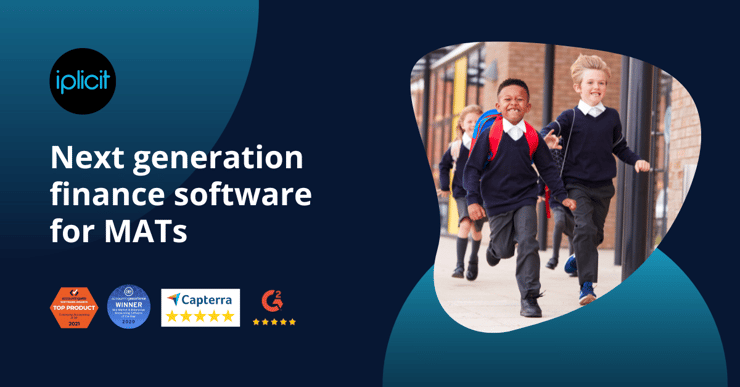Essential insights for Multi-Academy Trusts to harness technology for strategic success

This article originally featured in the July 'Industry Insights' edition of Education Business magazine
In today’s rapidly evolving educational landscape, technology plays a crucial role in shaping and facilitating the business and finance strategies of Multi-Academy Trusts (MATs). This article explores the importance of having the right technology stack to ensure MATs make informed decisions and effectively channel resources to support education.
How important is technology in shaping and facilitating a MAT's business and finance strategy?
It’s vital. Without the right technology, MATs can’t be confident that they’re making decisions based on the highest quality information and channelling their resources in the way that best supports education.
With any organisation, you need to have technology aligned to an operational strategy. Whether you’re a sole trader, a charity, an SME or a large corporation, a good technology stack is crucial.
It’s no secret that schools don’t receive the level of funding they would expect to deliver their desired pupil outcomes. Because of that, MATs are budget-led organisations. Having the best finance software is critical to getting clear insights into income and expenditure. It’s not a “nice to have” that makes life easier for the finance team – it’s essential to delivering the best education.
Why, and how often, should a MAT review its finance and business strategy?
There are a lot of variables but as a general rule, a three-year cycle is good practice. That’s currently about right to take into account advances in technology, such as the movement from server-based software to the cloud, or the rollout of AI.
But there are other events that should prompt a review – such as the political landscape, the introduction of new policies or even a change in government, which is obviously high on the agenda at the moment.
For MATs, the growth of the trust is another consideration. If you’re in a period of growth or facing a possible merger, this is a critical event that should be a trigger for a review, rather than waiting for the three-year cycle to come around.
When procuring a new finance system, what are the key considerations for MATs?
You don’t want to go through the process of procuring a new finance system more often than necessary. It’s a pillar of the MAT’s infrastructure, so you need to consider what’s right now and in the future.
A few key questions are:
- Is it scalable? MATs rarely stand still, so can the system support growth and continue to meet the MAT’s needs if it restructures or centralises? Can scaling be done without costly professional services or downtime? You’ll probably want to control the structure and configuration of the software without the need for external input.
- Is it truly cloud-based? Browser-based systems are the new norm, and they help support a MAT’s whole infrastructure, streamlining the integration between different applications and the transfer of data between them.
- Is it intuitive? Users need to be able to get the hang of a system quickly. Training is always required on new software, but if your gut instinct is that you could navigate your way around the system after a short introduction, that’s often a good sign that the wider organisation will get on well with it. Can you have input into the future direction of the finance system and feedback on any enhancements that could be made as technology moves forward?
- What does the Academy Trust Handbook say? However well you know the landscape, the handbook lays out the financial processes and reporting standards required by ESFA and other stakeholders. It’s well worth referring back to it to make sure any software you’re considering supports those.
How important is it to give robust and frequent training to staff using a MAT's finance system?
With increasing workloads this can be overlooked. Regular refresher training is a must in any job role. This is often the difference between unlocking efficiencies or just treading water.
Users of any software fall into habits, both good and bad. If they are not given a new perspective from experts, then how can anyone expect them to get the most out of any product?
Education finance solutions should have sufficient depth to support the detailed financial requirements MATs have. It’s only through regular training that users can unlock the full potential of these solutions.
Training does not have to be in the traditional sense of paid face-to-face or classroom sessions. Modern systems provide online guides, learning management tools and lots of other ways to access training content. This allows users to evolve their knowledge at a pace and time that suits them.
To stay ahead, ensure your MAT’s technology stack is up-to-date and aligned with your strategic goals — start reviewing your systems today!
Glen Hyde, Education Sector Lead Glen is a multi-academy trust specialist with over 13 years’ experience in supporting MAT finance projects, focusing on digital transformation and how the right software can support growth and efficiency. Glen also volunteers as a school governor with a focus on school budgetary control and effective spend.
Glen is a multi-academy trust specialist with over 13 years’ experience in supporting MAT finance projects, focusing on digital transformation and how the right software can support growth and efficiency. Glen also volunteers as a school governor with a focus on school budgetary control and effective spend.
Finance software for multi-academy trusts
A finance solution for multi-academy trusts (MATs) of all sizes, iplicit has a modern, user-friendly interface that will resonate with busy finance teams and MAT leaders.
As you grow, iplicit empowers your MAT to add schools quickly and efficiently, without charging the disproportionate costs that other vendors do for adding academies.


